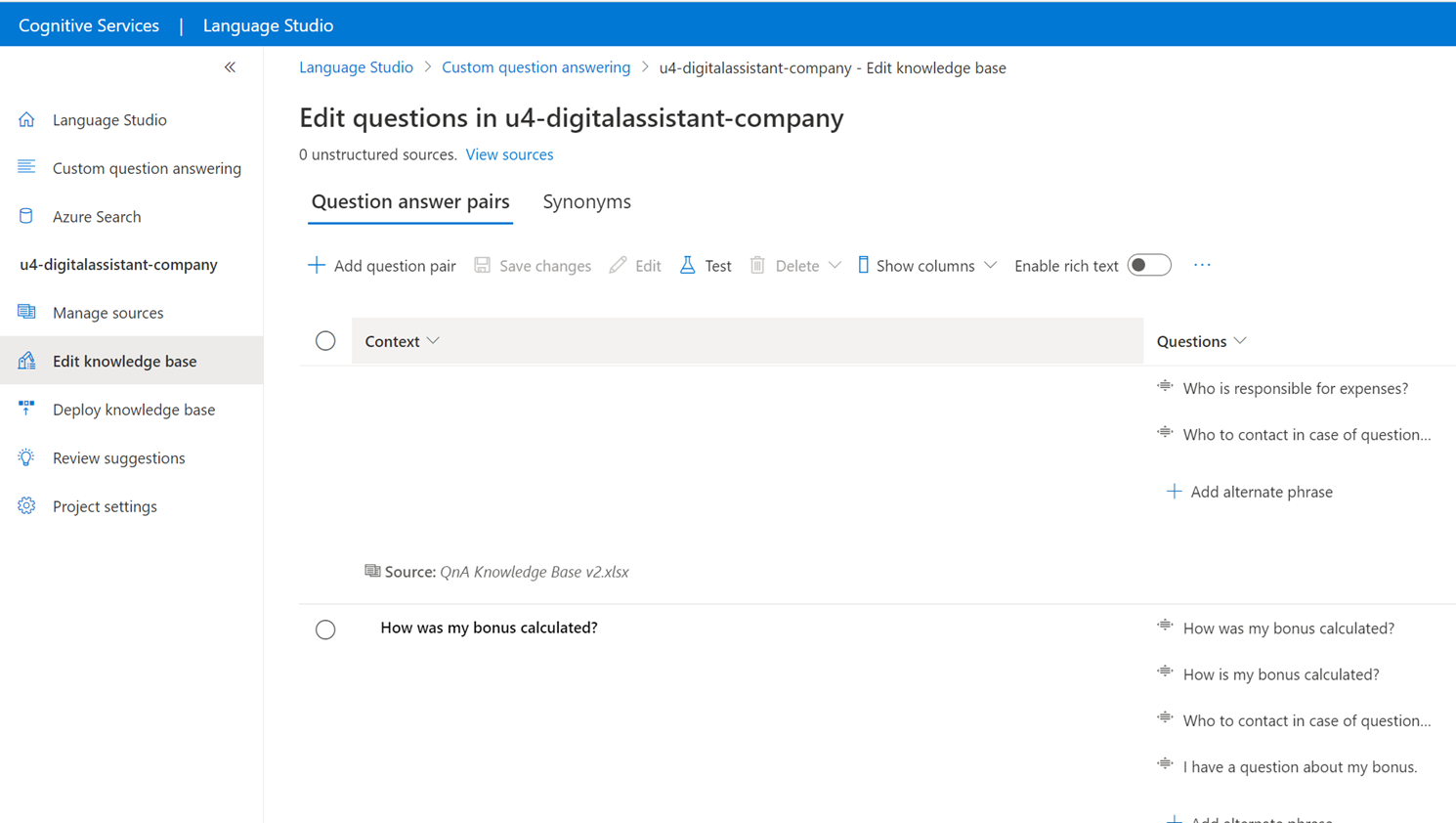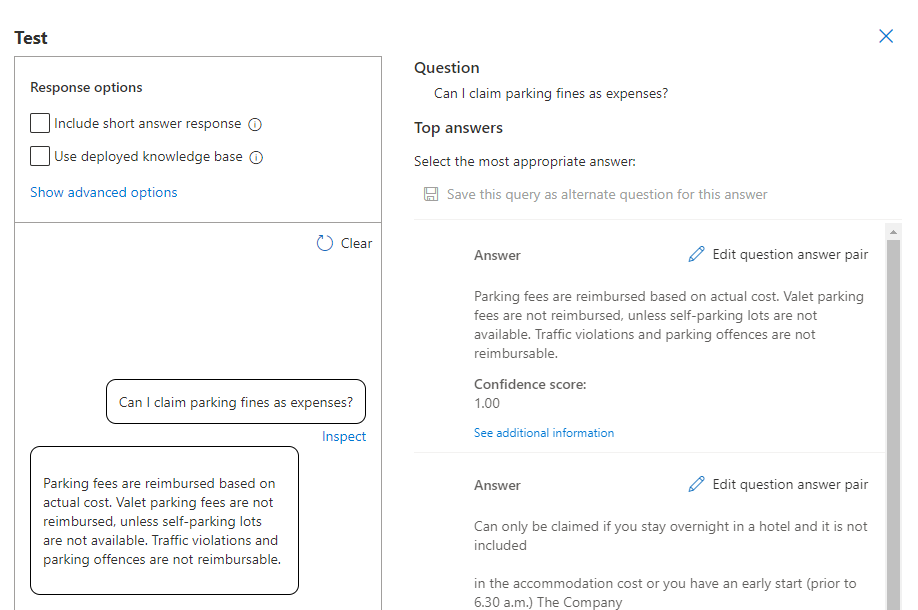Adding company specific information to Ava (DRAFT)
The Ava framework allows companies to integrate simple company-specific question-and-answer information into Ava. This allows a company's employees to quickly and easily get answers from Ava on simple company specific questions related to, for example, company HR policies, company travel and expense policies etc.
Company specific questions and answers are created in Microsoft Azure Language Studio and require no coding.
Each organization is responsible for creating, adding and maintaining its own company specific information for inclusion in Ava.
Prerequisites
Before you can create a custom question and answering service you must have:
- An Azure subscription
- A language resource with the custom question answering feature enabled
Creating a new Custom question answering service
You create a Custom question and answer service as follows:
- Create a new Custom question answering project by following the guidance on the Microsoft Language Studio portal.
Note that the Custom question and answer service is subject to Microsoft's pricing scheme over a certain free usage. Go to the pricing information for Custom question and answering for more details.
- Review the generated knowledge base questions and answer pairs and test, refine and retrain the newly created policy knowledge base as required.
- Publish the knowledge base.
- Provide the deployment details to the Unit4 Platform for inclusion in the Ava service. (to be defined).
Once your custom bot deployment details are configured in Ava, users will then be able to ask questions in Ava related to the contents of your custom knowledge base.
The user can also choose to enter the help first by asking a help related question or saying 'help', and then ask a more specific policy questions such as What class of car can I rent? and Ava should be able to provide the company-specific answer here as well.
Preparing the company specific information
You can feed content to the Custom question answering service by importing an existing document, referencing one or more URLs or entering Q and A pairs directly into the Edit knowledge base section.

Supported QnA source documents
The Custom question answering service accepts question and answer pairs in any of these formats:
- Word (.docx)
- PDF (.pdf)
- Text (.txt)
- URL of webpage. You can choose to pass in one or more URLs to existing, publicly accessible, FAQ style pages as long as they have a consistent FAQ type HTML structure, then the Azure Language Studio service can extract the Qs and As.
How well the Custom question answering service is able generate a good knowledge base depends on how the original source document is structured. For best results, the information should be structured as a set of clearly defined question and answer pairs and answers should ideally be as concise as possible. Therefore, an existing policy document might need some rework, depending on how it's originally setup, to get it into the optimum format prior to being processed by the Azure Language Studio service. However, this is not typically a big job and is relatively easy to do depending on the source information.
Tips for creating a knowledge base
- Try to keep answers as short as possible, since long answers don't read well as chat massages
- If an answer is unavoidably long, then consider providing a brief summary answer and including a hyperlink to the policy if it's a web site, or to the document if it's available online
- Once your knowledge base is generated in the Azure Language Studio service, train it to understand alternative phrasings for the various questions. This can be done iteratively after your policy knowledge base is published if you determine that users are asking unexpected questions etc.
Refine and train the generated knowledge base
Once you've specified which document to use and/or added question and answer pairs manually, and the knowledge base has been generated, some refinement and training will likely be required to improve the responses to your users' questions. This is done by testing how well the knowledge base answers expected user questions, assigning or reassigning answers to these questions as required and adding alternative phrasing for the original questions to obtain a confidence score for the provided answers to be above 70.
Testing your knowledge base is done in the Test tab where you enter the kind of questions you expect your users to ask and see how these will be answered. For each question, the best answer is shown along with its confidence score, as well as other potential answers. You're able to choose the most appropriate answer and add alternative phrasings to the question.

Once you're done you then save and retrain the knowledge base, and when you're satisfied it works well you then publish.
Submitting your deployment details to Unit4 (to be finalised)
Once you have published your policy bot, you need to submit the deployment details to Unit4 for integration into the Ava service.
To do this, simply copy and paste the contents of the Sample HTTP request shown in Deployment details in the Settings tab and send this in an email to Ava@u4pp.com.
